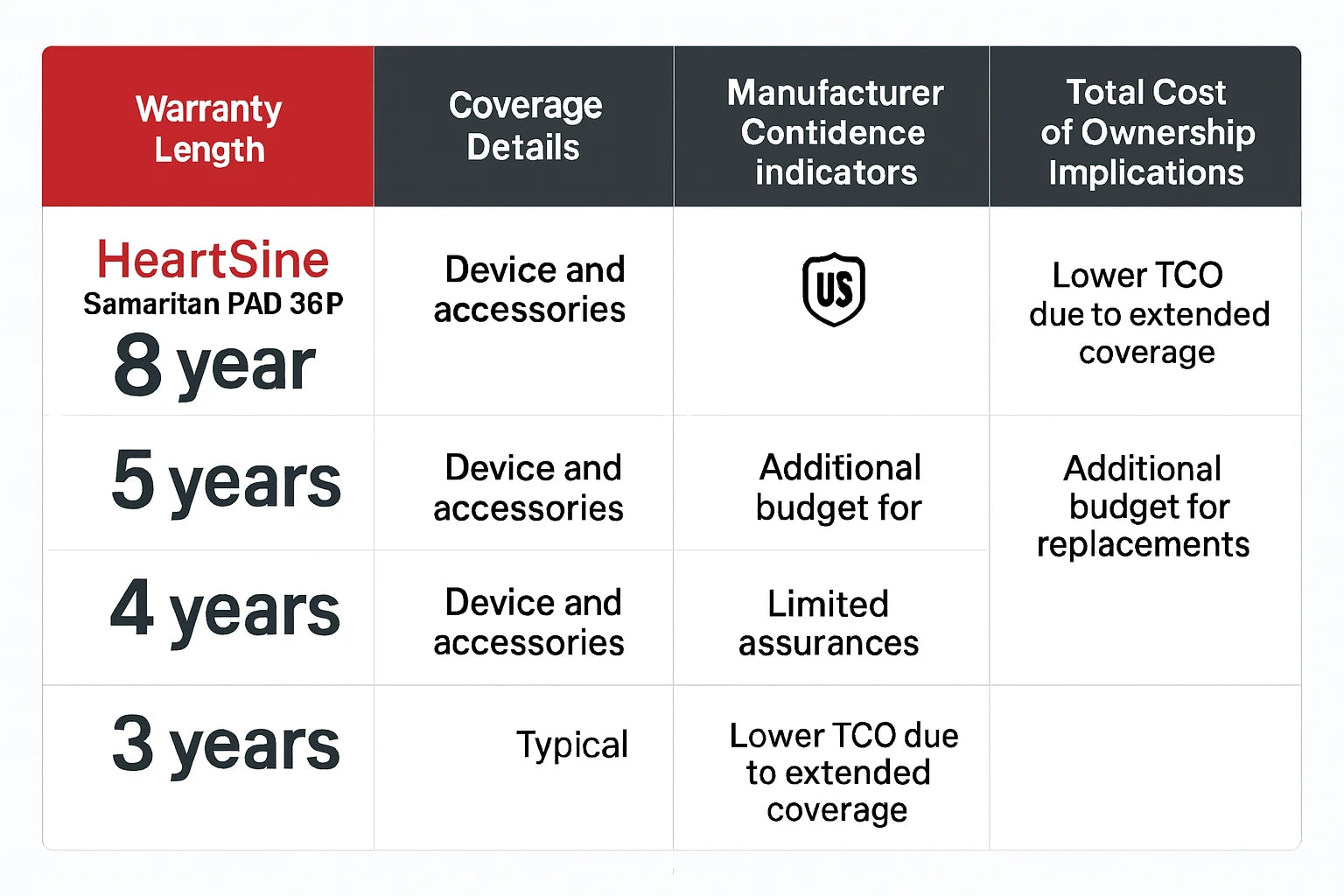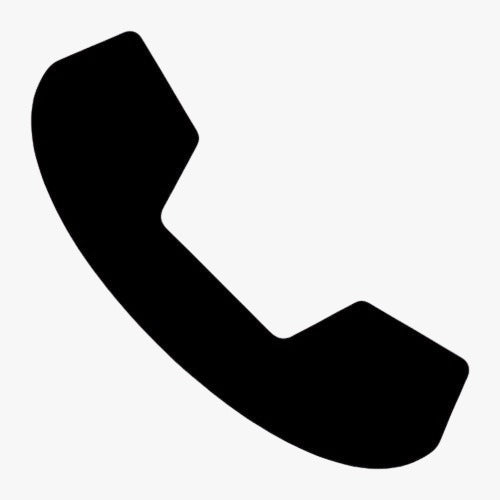When you’re choosing an Automated External Defibrillator (AED), it’s easy to focus on the upfront cost. You compare features, check prices, and look for the best deal. But one of the most critical factors, the warranty, is often overlooked. An AED warranty isn't just a piece of paper, it’s a direct statement from the manufacturer about the quality, reliability, and long-term value of their device.
An AED is a significant investment in the safety of your family, students, employees, or community members. Understanding the warranty helps you look beyond the initial price tag to see the true cost of ownership over the device's entire service life. It’s your assurance that this life-saving technology will be ready when you need it most.
Why the warranty matters more than you think
The average AED has a functional lifespan of 10 to 15 years, but this depends heavily on proper care and maintenance. A manufacturer's warranty is their promise that the device will remain free of material and workmanship defects for a specified period. When a manufacturer offers a long warranty, they are signaling their confidence in the product's durability and the quality of its components.
Think of it as the manufacturer putting their money where their mouth is. A shorter warranty might mean a lower initial cost, but it could leave you unprotected against defects for a larger portion of the device's lifespan. A robust warranty provides peace of mind and protects your investment for years to come.
Comparing AED warranties what sets the Heartsine Samaritan PAD 360P apart
Most AEDs on the market come with a warranty ranging from five to eight years. While a five-year warranty is good, an eight-year warranty demonstrates an exceptional level of manufacturer confidence. This is where a device like the HeartSine Samaritan PAD 360P truly stands out.
The HeartSine 360P comes with an 8-year warranty, one of the longest available for public access defibrillators. This extended coverage is a testament to the device's robust design and reliable performance. For a school, small business, or homeowner, this means eight years of assurance that your device is backed against manufacturing defects, significantly reducing the risk of unexpected costs.

Understanding what a comprehensive warranty tells you
A standard manufacturer warranty covers defects in the device's materials and how it was assembled. It doesn't typically cover damage from being dropped, improper storage, or neglect. This distinction is important because it highlights what the manufacturer can control, the quality of their product.
When a company like HeartSine offers an 8-year warranty, they are confident that their device is engineered to withstand the test of time under normal use. They have invested in high-quality internal components and rigorous testing to ensure the AED performs reliably. This commitment to quality is precisely what you should be looking for in a device designed to save a life.

Maximizing your investment a step by step guide
Owning an AED comes with a few responsibilities that ensure your device remains ready and your warranty stays intact. Following these simple steps will help you protect your investment.
Registering your AED and warranty activation
One of the most common missteps new AED owners make is forgetting to register their device. Proper registration with the manufacturer is often required to activate the full warranty term. This process is usually quick and can be done online. It officially documents your purchase and ensures you receive any important safety notices or updates.
Tools like the Response Ready App can help you keep track of your device's registration, maintenance checks, and accessory expiration dates, making program management simple and intuitive.
The crucial role of approved accessories
Using non-approved accessories, such as third party AED batteries or electrode pads, is a guaranteed way to void your warranty. More importantly, it can compromise the device's effectiveness. AEDs are complex medical instruments that are tested and calibrated to work with specific components. Manufacturer-approved pads and batteries ensure your device will analyze a heart rhythm correctly and deliver the precise level of energy required for a life-saving shock.
Making the right choice warranty impacts on total cost of ownership
When you choose an AED with a long warranty, you are making a fiscally responsible decision. An AED with a lower upfront cost but only a 5-year warranty could become a significant expense if it fails in its sixth or seventh year. You would be responsible for the full cost of repair or replacement.
In contrast, a device like the HeartSine 360P with its 8-year warranty provides a longer period of protection against these unforeseen costs. This makes it a smarter long-term investment, especially for organizations managing tight budgets. By choosing a device with a superior warranty, you are lowering your total cost of ownership and ensuring your organization is protected. Investing in AED value packages can further enhance this value by bundling the device with all the necessary accessories from the start.

As you evaluate your options, remember to choose the right AED by looking beyond the price. The warranty is your clearest insight into the device's quality and the manufacturer's commitment to you. It's a key part of what makes an AED a reliable, life-saving tool you can count on for years to come.
Frequently asked questions
Q: What is the typical lifespan of an AED?
A: An AED can last between 10 and 15 years. However, its longevity depends on consistent maintenance, proper storage, and the exclusive use of manufacturer-approved accessories. Our AED program management services, The Response Ready App, can help ensure your device is always ready.
Q: How do I register my AED to activate the warranty?
A: You can typically register your AED online through the manufacturer’s website shortly after purchase. Your device's user manual will have specific instructions. Using the Response Ready App can also help you track your registration status and other important readiness milestones.
Q: Can I use third party batteries or pads with my AED?
A: No, you should only use accessories approved by your AED's manufacturer. Using unapproved components can void your warranty and, more critically, may cause the device to malfunction during an emergency. You can find genuine accessories for all major brands in our AED superstore.
Q: Does a longer warranty really mean the AED is better?
A: Yes, it is a strong indicator of quality. A long warranty, like the 8-year coverage on the HeartSine Samaritan PAD 360P, shows that the manufacturer has used high-quality components and has great confidence in the device's long-term reliability and durability.
Q: What happens if my AED needs service under warranty?
A: The warranty generally covers the repair or replacement of the device due to defects in materials or workmanship. If you encounter an issue, you would contact the manufacturer or an authorized provider like Response Ready to start a service request. If you have questions about a specific device, feel free to contact our expert team.






